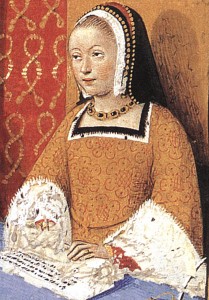 Thank you so much to Yann Kergourlay for writing this guest post on Anne of Brittany. Over to Yann…
Thank you so much to Yann Kergourlay for writing this guest post on Anne of Brittany. Over to Yann…
500 years ago, on January 9th, 1514, around 6 o’clock, Anne of Brittany died, aged 37 years old at the Castle of Blois, France. During her short and eventful life, she had accumulated honors and titles while being faced with sadness and grief at every corner.
Anne’s life – A timeline
Anne of Brittany was born on January 25th, 1477, at the Castle of Nantes in Brittany, to her parents Francis II, Duke of Brittany and his second wife, Marguerite of Foix.
Her birth was time for celebration, as even though she wasn’t the expected and wished-for son, the laws of Brittany allowed a woman to rule and thus Francis II had a successor, as well as a proof that his wife wasn’t barren. Marguerite of Foix gave birth to a second daughter, Isabeau of Brittany, one year later. Anne of Brittany’s very early childhood – while she was still sheltered from the troubles arising – was certainly to be the happiest period of her life. Here are the major dates of life:
- February 10th, 1486: Anne and Isabeau are recognized by the Estates of Brittany as true heiresses and successors of Francis II.
- March 15th, 1486: Death of Marguerite of Foix, Anne and Isabeau’s mother.
- July 28th, 1488: Battle of Saint-Aubin-Du-Cormier – Defeat of the Bretons against the French. The treaty of the Orchard of August 19th, 1488, direct consequence of the defeat, led Francis II to accept, among other things, to have the French have a say as to who would be Anne’s future husband.
- September 9th 1488: Francis II Duke of Brittany dies Anne thus becomes Duchess and ruler of a weakened and threatened by the French Brittany: She is 11 years old.
- February 10th, 1489: After fleeing Nantes since the division of her advisors over the issue of her marriage, Anne is crowned Duchess of Brittany in Rennes.
- August 24th, 1489: Anne’s sister, Isabeau, dies. Anne is now without family.
- December 19th, 1490: Anne marries by proxy Maximilian of Austria, Holy Roman Emperor. She thus becomes, at 13 years old, Holy Roman Empress.
- December 6th 1491: After months of being besieged by the French in Rennes, Anne is forced to surrender. She marries Charles VIII in the Castle of Langeais. Her Breton subjects are happy to see an end to the war.
- February 8th, 1492: Anne is crowned Queen of France at the Basilica of Saint Denis.
- April 7th, 1498: Charles VIII dies. Despite Anne’s many pregnancies, there is no direct heir to the French throne, Anne’s children all dying shortly after birth. The throne goes to Louis of Orleans who becomes Louis XII. Anne reasserts her power over Brittany, rules again and notably reinstates the chancellorship of Brittany. She strikes a coin, her “cadière d’or “.
- January 8th, 1499: Following the clauses of her marriage contract to Charles VIII, Anne marries her successor Louis XII, in Nantes. This second marriage contract is far more favorable to Anne and Brittany, she enjoys more control over Brittany than she ever had under Charles VIII’s reign.
- October 13th, 1499: Birth of Claude of France, future Queen of France and wife to Francis I, daughter of Anne and Louis XII.
- November 18th, 1504: Anne is crowned Queen of France for the second time in the Basilica of Saint Denis.
- July-September 1505: Anne makes her tour of Brittany. This “Tro-Breizh” greatly participates to create her aura of a good duchess of Brittany.
- October 25th, 1510: Birth of Renée of France, future Duchess of Ferrara, second daughter of Anne and Louis XII.
- January 9th, 1514: Death of Anne of Brittany. Her funerals are of unprecedented length. Her body is laid to rest at the Basilica of Saint-Denis, necropolis of the French Kings, while at her demand, her heart is put in a gold reliquary and brought to the mausoleum she had made for her parents in Nantes.
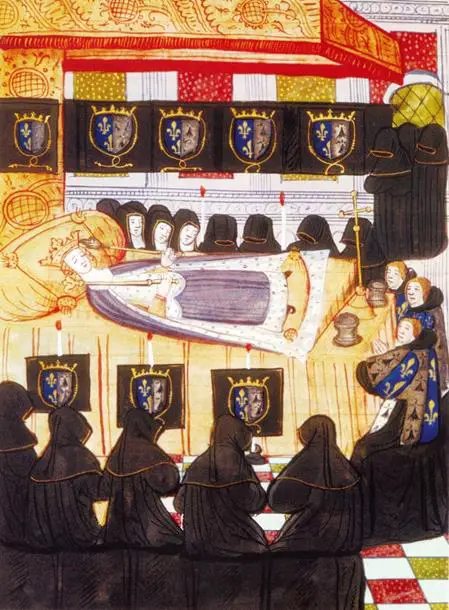
Anne’s links with England and Anne Boleyn
- Anne of Brittany was a distant relative of Katherine of Aragon: Anne’s maternal great-grandfather, John II King of Navarre and Aragon, was also Katherine of Aragon’s grandfather.
- In 1481, Anne was promised to the English heir Prince Edward, son of Edward IV, or should he die, to his little brother. Of course this match never happened as both Edward IV and his little brother went down in history as “the Princes in the Tower”.
- Henry Tudor spent years in exile in Brittany, at the court of Francis II, before he went back to England to conquer the throne. A Marriage with Anne was considered, but never occurred.
- Henry Tudor, then Henry VII, did not forget Anne and her father’s help and involved himself militarily in the Franco-Breton war on Anne’s side and provided her with soldiers, one of the rare times during his reign that Henry VII actually sent troops and meddled with a foreign war. His efforts proved to be insufficient to save Brittany from the French.
- Despite her being replaced by Anne of Brittany as wife and Queen to Charles VIII, Margaret of Austria held throughout the years a very friendly correspondence with Anne of Brittany. Anne of Brittany notably wanted to marry her daughter Claude of France to Charles V, Margaret’s nephew, in order to secure Brittany’s independence from France.
- In 1512, Anne involved her Breton flagship, La Cordelière, in the naval fight between Henry VIII and Louis XII. Anne’s La Cordelière and Henry VIII’s The Regent both caught fire and sank together. La Cordelière’s captain, Hervé de Portzmoguer, became immediately afterwards a Breton hero.
- In 1514, Anne of Brittany’s death had a direct impact on Anne Boleyn’s life since it led to the marriage of Louis XII to Mary Tudor and thus Anne Boleyn’s coming to France.
- Like Margaret of Austria, Claude of France and Renée of France proved to be great influences in Anne Boleyn’s life. Both girls had inherited certain traits from their mother: Claude was pious, generous and fond of Books of Hours, while Renée was stubborn and intelligent, as well as a protector of the arts.
- Anne of Brittany was the one who brought into fashion at the French Court what would be known as the “French hood” which was later Anne Boleyn’s favourite headdress.
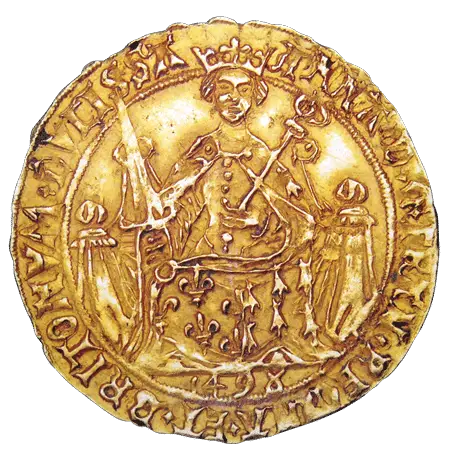
Anne’s Legacy
- Anne of Brittany was Queen of France two times. She remains the only woman ever to have been Queen of France twice.
- She was crowned – Most of the time, Queens would only be married to the King. Due to her station as ruling Duchess of Brittany – as well as Charles VIII’s desire to sanctify their union as they were still waiting for the papal bull authorizing the marriage after the marriage had actually been performed. She was thus crowned twice in the Basilica of Saint Denis, in 1492 and 1504.
- Anne created a Woman’s Court. Before Anne, women were hardly seen at court, but she created a real court filled with women around her. She educated them in everything and so well that she was often asked to choose among her ladies brides for Kings and nobility from all over Europe. Her ladies were known for their culture, beauty and piety. She can very much be considered to be an early feminist.
- She was a really religious Catholic woman and is known to have been very charitable and to have given many reliquaries and precious objects to diverse religious orders and churches.
- She was a protector of arts and was very-well known for her patronage. Her Book of Hours, “Les Grandes Heures d’Anne de Bretagne” made by Jean Bourdichon, is considered to be a masterpiece.
- Anne was the first Queen to wear black for mourning, following the Breton tradition instead of the French Tradition of Queens mourning in White. Catherine of Medici would later also mourn in black.
- She was the first Queen to have her own personal guard, which was filled mainly with Breton officers.
- Her Funeral lasted more than 40 days – She died on January 9th, 1514 and her funeral lasted until the 19th of March, when her heart was brought to Nantes. Of unprecedented length and magnificence, her funeral became an example for all royal funerals to follow.
- Contrary to popular belief, Brittany was still independent when she died, joined with the realm of France but still a different entity. It is later, in 1532, that Brittany was effectively united with France, when Francis I enticed the Estates of Brittany into putting forward the perpetual union of Brittany with France. At the time, Claude of France, Anne’s heiress as Duchess of Brittany, was already dead (She died in 1524).
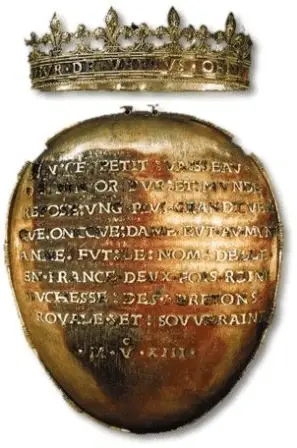
What is to be remembered of Anne of Brittany is that she was a woman ruler who became Duchess of Brittany at 11 years old, when the situation was at its worst to preserve the independence of the Duchy. She did all she could to avoid Brittany falling into the French realm and when she surrendered at the siege of Rennes, it was to offer Peace after years of a conflict that was destroying her lands. She was a woman of duty, and as Queen of France did all what was expected of her and left the image of a wise, shrewd and stubborn Queen. She was a protector of the arts, helped advance the cause of women and is to be thanked for the construction or embellishment of many churches as well as castles in Brittany and France.
In Brittany she remains the most well-known historical figure and one that is most liked, even though her life isn’t as well-known as it should. Today much still needs to be done to make her more known in Brittany, France and Europe.
I’d like to thank Claire for allowing me to write this guest-post. It means a great deal to me, as a long-time fan of the site and admirer of Anne Boleyn, to be able to commemorate here the half-millenium of the death of Anne of Brittany, a Duchess and Queen I greatly admire and that Anne Boleyn herself must have heard a lot of and respected.
To finish with Anne of Brittany’s own words, here are her mottoes: Potius mori quam foedari (In Breton: Kentoc’h Mervel eget bezan saotret; In English: Rather Death than Dishonor), Non Mudera (In Breton: Ne chenchin ket; In English: I won’t change) and A Ma Vie (In English :To my life).
Thanks to all of you who have read this, I hope you liked it and learned from it, as well as perhaps now want to know more about this fascinating woman. Thanks again to Claire for allowing me to write this article and for having such a wonderful and informative website.
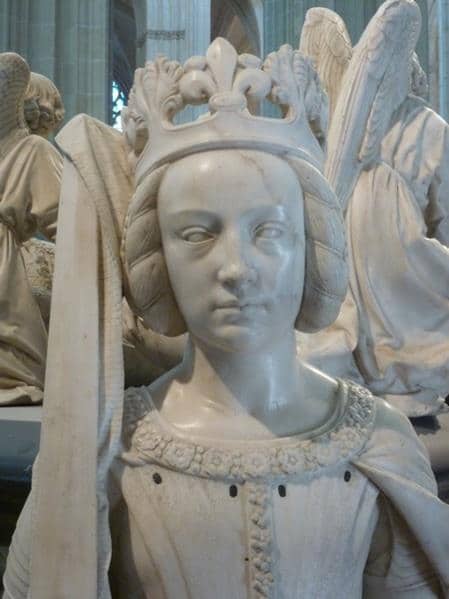
The following video is filled with images of Anne of Brittany and things related to her. The song is actually about her and was written after a poem celebrating her funeral: